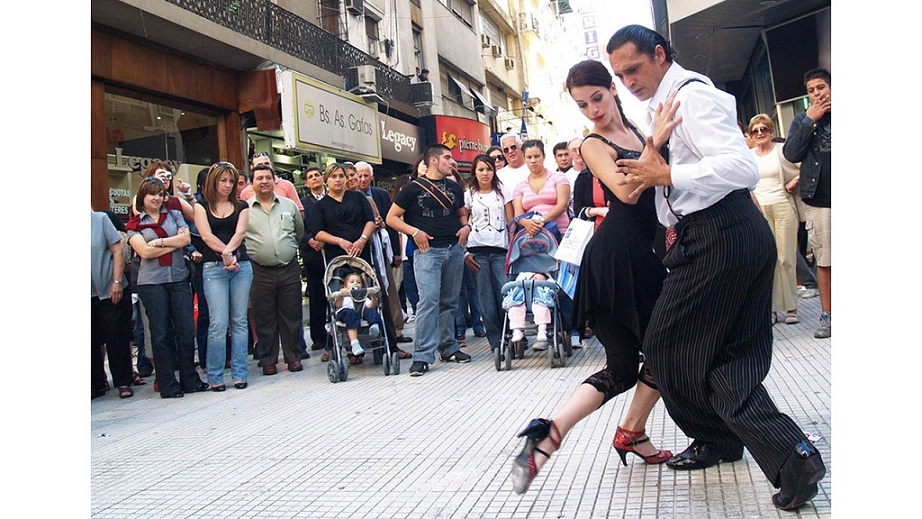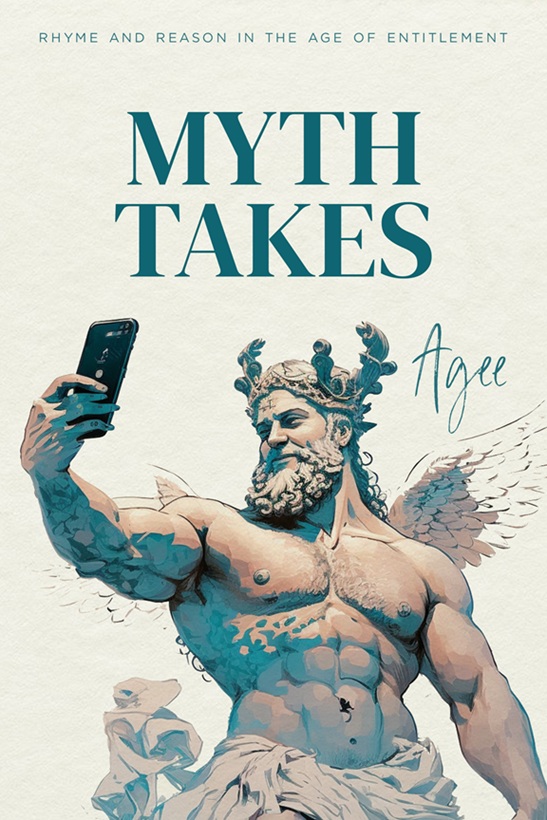.
Do they still dance on old walkways
with lowered shoulders, mastered breath
and almost martial, measured gaze
though one that’s bent on life, not death?
Will men with class step up and raise
an arm and pause: a shibboleth
that leading, and not lording, pays
respect—and takes his partner’s breath?
Do they still dance outside cafes
where women take that hand, serenely
send the other past and, tracing
fingers round his shoulder, mean
that he should follow her embrace?
Will they, with slightest calf-lines lean
in lightly, energize the space,
and dance the Tango Argentine?
Just look at him: He is the man
who wears suspenders with his jeans.
His faintly graying temples can
assure, compel, invite. He means
to spin a spell that’s greater than
what younger tigers’ wisdom gleans.
just look at him. He is the man
who understands what tango means.
She is the savvy woman who—
with tightened, open vest, surrenders
nothing yet; with knees that through
her silk, a-swish, delay the ends
desire seeks, with eyes a hue
of smoke-and-light no man contends
against—draws in a partner to
the energy the tango lends.
He is the working man who, while
the early coffee brews, tries out
his steps or searches for his style
between the dumpster and his doubt
at midnight after work reviling
graveyard shifts, and yet devoutly
finds in form, despite his trial,
his dance, and what it’s all about.
She is the one who always seems
too young for him, the woman who
can read and write a man’s own dreams
through layered bangs, cut sharply to
the corners of her eyes. She screams
inside at work while out of view
she does her ochos—under gleaming
counters: what else can she do ?
Just look at him. Just look at her.
Or rather look at all that they
aspire to: their feet confer
from worldliness and wear, the way
of gravitas, while hips infer
that heaven’s held in how they play.
The dances meld. Just look at her.
Just look at him. None look away.
Across the street a drunk sits down,
too staggered to misunderstand.
Another, having lost his frown,
a Bidi smoking in his hand,
has raised that arm and paused: a crowning
gesture which has left him standing,
poised to offer dance. Then down
his spine run chills he never planned.
The crowd in their own time and way—
the shoppers, mocking teens, a few
bravado boys, their dates—they play
at life and pass. But one or two
are changed, becoming as they sway,
someone who steps-up to, or who
draws out, the dreamy scene. Do they
still dance the tango here? They do.
The Tango Argentine.
.
.
Daniel Kemper is a systems engineer living in California.















Daniel, we have witnessed the tango all over Europe, from couples dancing around a battery-powered cassette player in the dark, on the cliffs of Tenerife, to the organised classes on the banks of the Seine. Your Poem, as poetry should, brought back many happy memories. I will be re-reading this all week. Thank you so much.
Hi Jeff,
Thank you for your comments. I have only in the last year gotten into the Argentine Tango scene. Love some of the flashmobs that I see on the internet. Very pleased you feel that I’ve captured something real.
I loved this poem…thank you!
If I’m not mistaken, you’re more or less local enough to get that “Tango By The River” in Old Town Sac was more than a small part of the inspiration of this poem. Glad you enjoyed!
Daniel, you have swept me up in “The Tango Argentine” with your forthright commands throughout (I love such lines as; “Just look at him. Just look at her” – you use repetition to excellent effect) and the vivid images your words conjure- stanzas three and four are prime examples. I am seduced by the dancing duo in all their dark delight.
For some reason it reminds me of the paso doble scene from a favorite film of mine – “Strictly Ballroom”, where a grandmother shows an aspiring dance champion that the rhythm has to come from his heart.
I love this raw and sensual multi-layered treat of a poem. Thank you!
I *love* that movie! I know exactly the scene you mean. Everything about the paso doble scene is awesome. The balance, the intensity, the heart, the form!
I should take the time to mention also that another inspiration for this poem was Bukowski. [Wha?]. Yeah, he’s a fav. I was watching a documentary and one of the party favors given out on some occasion was a tiny book that had one word on a page. “When the spirit vanishes the form appears” -as best I can quote. It was the sentiment of his publisher who felt that all formal verse lacked feeling — inherently — because of it’s structure. I admire John Martin extremely, but I was horrified by this. I see what they are getting at and wanted to retort defensively, “No, when the form disappears, all you’ve got left is feeling.” But they do hit near a truth. Still, I wanted to point out that the height of intensity was the two working as one- form and content. The tango seemed the perfect demonstration of form not only carrying feeling but intensifying it.